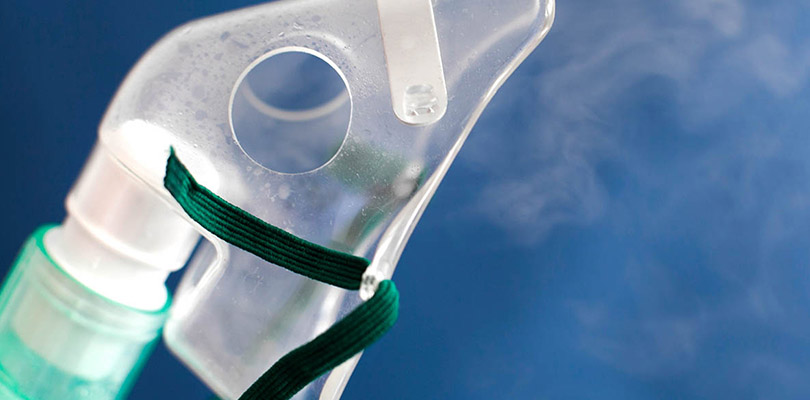Six Pulmonary Hypertension Treatment Options
Pulmonary hypertension is a rare but dangerous condition. It causes high blood pressure in the arteries that supply the lungs. When pulmonary hypertension occurs, the heart has to work harder than normal which can eventually lead to heart failure.
The prognosis for this condition can be vastly improved if the right treatment is received early. In this article, we will explore the most common pulmonary hypertension treatments and how they can help patients with this serious disease.
What is Pulmonary Hypertension?
To fully understand pulmonary hypertension, we need to understand how the lungs and the heart work together.
One of the major functions of blood is to deliver oxygen to tissues all over the body. Oxygen-poor blood enters the right side of the heart and is pumped through the pulmonary artery to the lungs to be infused with oxygen. Then, it returns to the left side of the heart to be pumped back around the body.
When the blood flow between the heart and lungs becomes blocked, pulmonary hypertension occurs.
There are several types of pulmonary hypertension, all of which have slightly different causes. Sometimes the pulmonary artery which carries blood between the heart and lungs becomes damaged. Other times, the artery walls become stiff and thickened, meaning that they cannot expand enough to allow blood through easily. In some cases, there may be blood clots inside the pulmonary artery causing a blockage and making it harder for blood to pass through.
In all of these situations, the right side of the heart has to pump harder than normal to keep the blood flowing to the lungs. Over time, this can lead to heart failure, a condition which may be fatal if left untreated.
Symptoms of Pulmonary Hypertension
The symptoms of pulmonary hypertension include:
- Breathing difficulties
- Fatigue
- Dizziness
- Feeling faint
- Chest pain
- Palpitations
- Edema of the legs, ankles, or abdomen
- Cyanosis (a bluish tint on the lips or skin)
These symptoms are usually worse following physical exercise or over-exertion.
Diagnosing and treating pulmonary hypertension early is the best way to improve the chances of survival for patients with this condition. Let’s take a look at some of the best treatment options for pulmonary hypertension, and a brief explanation of how they work.
Pulmonary Hypertension Treatment Options
There is currently no cure for pulmonary hypertension, but there are several treatment options that can help relieve symptoms and improve the prognosis for this condition.
Medication for Pulmonary Hypertension
There are numerous drugs that are helpful for pulmonary hypertension. These include:
- Prostaglandins/Prostanoids
- Soluble guanylate cyclase stimulators
- Endothelin receptor antagonists
- Phosphodiesterase 5 inhibitors
- Selexipag
These drugs work by widening the blood vessels in the lungs to improve blood flow. Some of these pulmonary hypertension drugs are taken as tablets, while others are inhaled via a nebulizer, or administered intravenously through a permanent catheter known as a Hickman line.
The most common side effect of these drugs is low blood pressure. They can also cause:
- Nausea or vomiting
- Diarrhea
- Headaches
- Facial flushing
- Jaw, foot, or joint pain
AFib results in 400,000 hospitalizations annually, with over 5 million doctor’s visits. Know these atrial fibrillation symptoms to avoid complications.
Other Medications
Other drugs may be used to relieve the symptoms of pulmonary hypertension such as palpitations or edema.
Anti-coagulant drugs such as warfarin can be used to thin the blood and reduce the risk of clotting, while diuretics like furosemide can help to reduce blood pressure and relieve swelling. Digoxin can be used to regulate the heartbeat, and calcium-channel blockers such as diltiazem may help to keep blood pressure under control.
Oxygen Therapy
Oxygen therapy can help relieve symptoms such as breathlessness and fatigue. Oxygen also helps relax blood vessels in the lungs to improve circulation. Exactly how much oxygen is required will depend on each patient’s individual needs, and some patients might not need any oxygen at all.
Pulmonary Rehabilitation
Pulmonary rehabilitation involves learning how to exercise safely in order to improve oxygen uptake and relieve symptoms such as breathlessness. Regular, gentle exercise can help to improve overall strength and fitness as well as having a positive effect on your mental health.
If you attend pulmonary rehabilitation sessions, you will also be given information and advice about how to keep your lungs healthy and manage your condition.
Lifestyle Changes
It is important that patients with pulmonary hypertension adapt their lifestyle to keep symptoms under control and avoid worsening the condition. Some helpful lifestyle tips for pulmonary hypertension include:
- Find a good balance between exercise and rest
- Do not smoke
- Eat well and maintain a healthy weight
- Avoid traveling to high altitudes
- Do not use hot tubs or saunas
- Avoid pregnancy and do not take birth control or other hormonal treatments
- Get vaccinated against influenza and pneumonia
Surgery
In some cases, surgery for pulmonary hypertension may be necessary. This could involve a procedure called pulmonary endarterectomy, which is used to remove old blood clots which may be blocking the blood vessels.
Another procedure, called balloon pulmonary angioplasty, involves inflating a tiny balloon inside the pulmonary artery for a few seconds to push away blockages and improve blood flow to the lungs.
An atrial septostomy is another option. It involves making a tiny hole between the right and left sides of the heart and inserting a thin, flexible catheter. This reduces pressure in the right side of the heart, allowing it to pump more effectively.
In severe cases of pulmonary hypertension, a transplant may be the only option. This could be a lung transplant or a heart-lung transplant depending on the severity of the disease. However, this is a last resort due to the risks involved, and is not usually needed since other pulmonary hypertension treatment options, such as medication, are generally effective.







